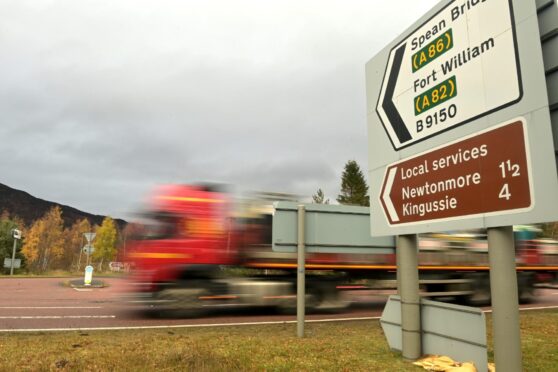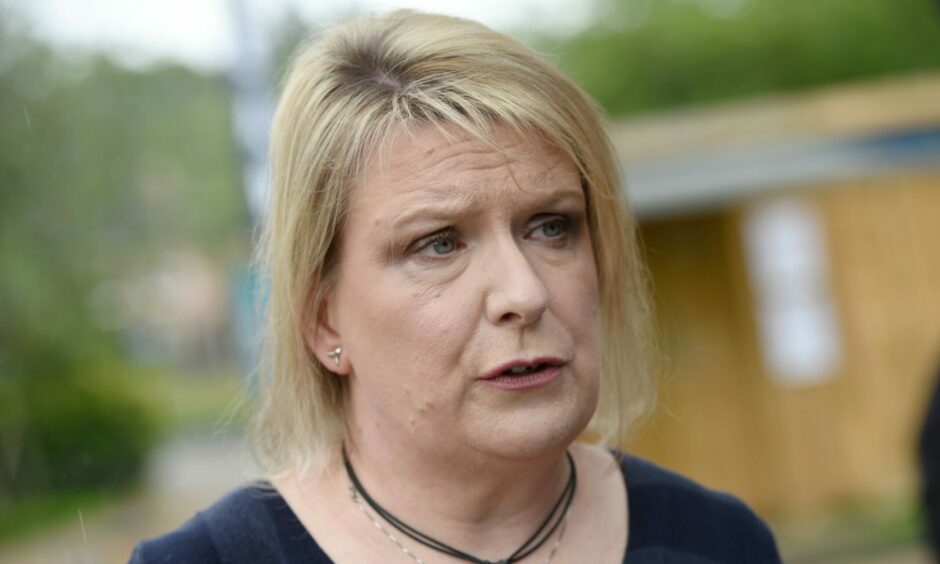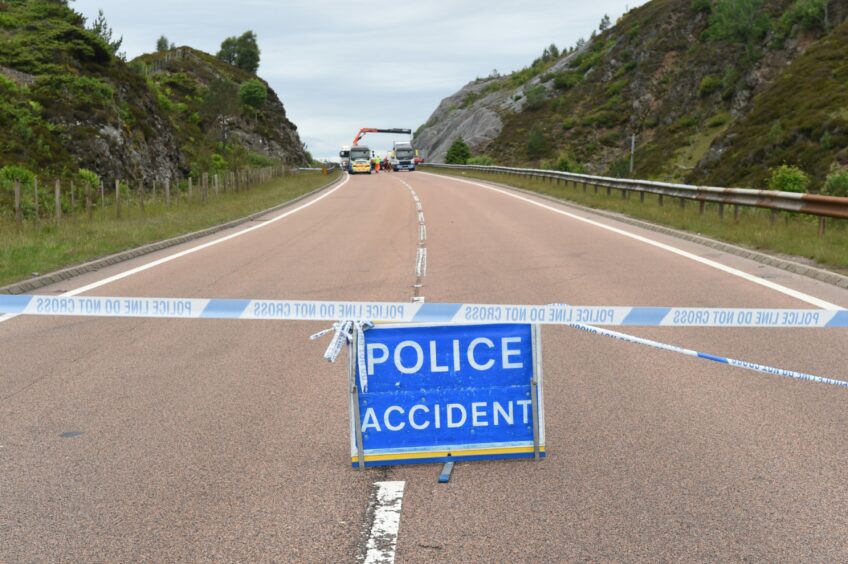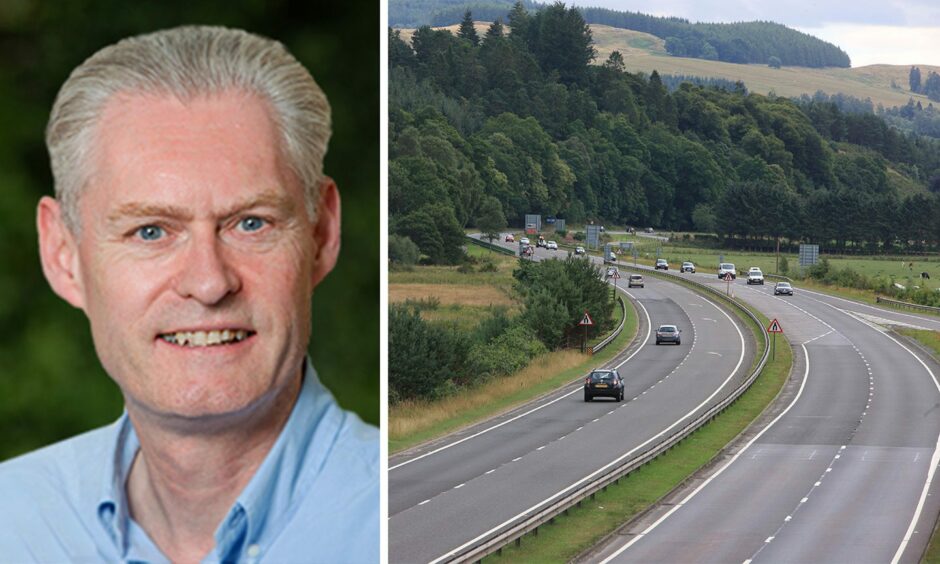Transport bosses have paid design consultants and planners almost double what has been spent on actual construction to dual the A9.
We can reveal a staggering £246.7 million – more than half of the total money spent on the project so far – has been handed over to cover “preparation costs” including designers.
This figure dwarfs the £133 million spent on construction, £62 million spent on ground investigation and surveys, and £9 million on land purchases.
The latest costs were revealed following a freedom of information request to the Scottish Government.
Completion of the project to dual the stretch between Perth and Inverness has been delayed by 10 years until 2035, confirmed in a government statement before Christmas.
Project repeatedly delayed
Alex Neil, the former SNP minister who was responsible for committing to the works, warned it could now go more £1 billion over budget.
He previously told MSPs that a “realistic” and fully-costed 2025 target date for completion was set out by officials from the government agency Transport Scotland in May 2012, on his instruction.
Within a decade, officials were saying the date was not attainable.
The project has repeatedly been delayed, despite campaigners warning lives are being lost every year while deadlines are extended.
Laura Hansler, from the A9 Dual Action Group, said it beggars belief that so much has been spent on planning while so little work has been done.
She said: “It seems ludicrous that so much money has already been spent on design and planning without a single shovel being in the ground.
“It’s a bit rich for them to go on about getting value for money when such vast amounts are already being spent in this way.
“Bearing in mind that they have only delivered 11 miles in the past 16 years, how they think they’re going to deliver another 44 in the next five years, let alone the whole project by 2035, is completely beyond me.”
Setting a glacial pace
Earlier this year, members of the Civil Engineering Contractors Association accused the government of deliberately setting a “glacial” pace because of a lack of funding.
They claimed the civil engineering sector in Scotland has known for many years that the promise to dual the A9 by 2025 would not be met.
The group also blamed a “dated” bespoke contract which places all financial risk on the contractor for issues such as weather and ground conditions.
Scottish Conservative transport spokesman Graham Simpson said the SNP-Green government “mismanagement” of infrastructure “seemingly knows no end”.
He added: “Instead of dualling the A9 from Perth to Inverness by 2025 as they promised, they have dualled less than 20% of the necessary sections, invested at rate that would take over a century to make up the necessary project budget, and spent twice as much on design consultants as on actual construction.
“Communities along the A9 have been crying out for concrete progress and they are angry that the SNP have so little to show after so long.
“Not only have they under-funded this key project, they have been shockingly inefficient with the funding they have actually put forward.”
SNP transport chief Màiri McAllan told MSPs that the cost of the project is now expected to be £3 billion, making it one of the most expensive in the history of the Scottish Parliament.
The Scottish Government first pledged to dual the long stretch of road shortly after taking power in 2007.
It will be at least another seven years until even half of the overall project has been completed.
Construction on the first section – the £35 million, 4.6 mile Kincraig to Dalraddy stretch – started in 2015 and was completed in 2017.
Lives being lost
The only other section to be finished to date is the Luncarty to Pass of Birnam project, which cost £96 million and involved six miles of dual carriageway.
Construction started in 2019 and it opened to traffic in 2021.
In the meantime, lives have continued to be lost on dangerous stretches of the road.
Transport Scotland says more than 65,000 people travel along the Inverness to Perth section every day.
Last year, the number of people killed in crashes rose to its highest level in 20 years, at 17.
Regan Johnstone, who had just turned 18, died after his car collided with a lorry near Tomatin on May 19 this year.
Both vehicles burst into flames as a result, and the road was closed for 17 hours.
His death sparked fresh calls for action to be taken to dual the road.
An upgrade to the Tomatin-Moy stretch where he was driving was rejected in February due to high costs and is now expected to be completed in 2o27 at the earliest.
Expert says more can be done now
Road safety expert Neil Greig told us dualling would remove many of the main issues causing the most serious crashes.
But while he believes progress has been “ridiculously slow”, he says more can be done now to keep to keep motorists safe until the dualling project is completed.
Greig, policy and research director of the charity IAM RoadSmart, said most deadly crashes on the A9 are caused by difficult junctions, fatigue or drivers visiting from other countries who are used to driving on the other side of the road.
He said: “A lot of things can be done.
“I think there could be more resources put into high-profile policing. It stops some of the bad overtaking behaviour and wakes people up.
“There are also minor engineering measures like better white markings, better road studs, clearer signposting, and lighting at some of the junctions.
“In the short-term, we can do more with the fatigue issue by making the lay-bys as comfortable and safe as possible,
“The unique thing about the A9 is that it’s the only road in Scotland where you get to Perth and you don’t go through another town until you get to Inverness after 100 miles.
“So we need to keep that investment up until we get the dualling, which is obviously going to take a lot longer than we hoped for.”
What does Transport Scotland say?
Greig called on officials to “button down” contracts for the works, pointing to the “ridiculous” outcomes of previous talks that saw months of negotiations without a deal being agreed.
“The Scottish Parliament established a need for this road so let’s accelerate some of these planning processes to finally allow these contracts to be sorted out,” he said.
A Transport Scotland spokesman described dualling the A9 between Perth and Inverness as one of the biggest and most complex transport infrastructure projects in the country’s history.
He said it requires careful, in-depth planning and design to ensure the delivery of projects that bring benefits to local communities, businesses and road users living, travelling and working along the route.
The spokesman added: “The up-front preparation costs on the A9 dualling are a normal aspect of delivering infrastructure projects of any scale.
“The design and assessment phase clearly must take place before construction.
“The Transport Secretary confirmed in Parliament the Scottish Government’s commitment to dualling the A9 between Perth and Inverness and set out a concrete plan, meaning that the Highlands can have confidence that A9 dualling will be delivered in full.
“When construction starts on Tomatin to Moy next year, under the delivery programme set out by the Cabinet Secretary, it will roll continually until the route between Perth and Inverness is fully dualled.”





